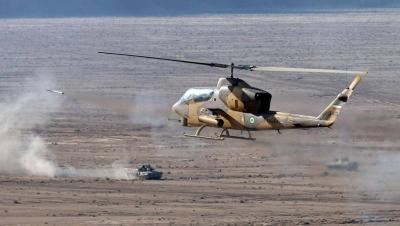Former Iranian Foreign Minister Mohammad Javad Zarif blamed U.S. sanctions for the helicopter crash involving Iranian President Ebrahim Raisi, asserting that "these crimes will be added to the list of America's crimes against the Iranian people."
The recent crash of President Raisi's helicopter on Sunday brings to the forefront the issue of Iran's aging air fleet, exacerbated by the impact of sanctions. This is not the first time Tehran has witnessed such incidents in recent years. The British newspaper "Financial Times" questioned how Western sanctions have affected Iran's old helicopters. In a report about the causes of the helicopter crash that carried President Raisi and several Iranian officials, it was noted that the "Bell 212" helicopter, made in America, which crashed in a mountainous region amid heavy fog, is approximately 30 years old.
The report highlighted that it is still unclear why the American-made helicopter crashed near the Azerbaijan border last Sunday, but analysts and former officials suggested that the malfunction is likely the result of technical issues, as a significant portion of Iran's air fleet is in urgent need of spare parts, which Tehran has been unable to purchase due to U.S. and other Western sanctions.
According to the "Financial Times," the most likely reason for the helicopter's crash is the old fleet, which has deteriorated over decades. After being prohibited for years due to Western sanctions on its institutions and export restrictions on aviation goods, Tehran has struggled to renew its fleet or access spare parts and maintenance contracts.
The newspaper explained that Iran's civilian aircraft include several Airbus "A300" planes, which ceased production over a decade ago, with the average age of active passenger aircraft being around 28 years, more than double the global average. Additionally, Iranian airlines operate an "A300" aircraft that is approximately 40 years old.
The "Bell 212" helicopter, along with its four-blade variant "Bell 412," is known for its reliability. It was first developed in the 1960s and was used during the Vietnam War, continuing to be a staple of global air operations since then.
The report also noted that Iran, which maintains its aircraft operations through a mix of smuggled parts and reverse engineering, has a particularly tumultuous aviation history. In 2005, a military transport plane crashed into a residential building in Tehran, killing 128 people, according to official media. More recently, a helicopter carrying Iranian Sports Minister Hamid Sajjadi crashed last year while attempting to land in a football stadium. The minister survived, but his aide died, and 12 others were injured. Five months later, a training aircraft crashed in western Iran, resulting in two fatalities.




